
Call Centres Customer retention and loyalty are critical components of your company’s success. Most businesses rely on repeat customers to keep the doors open and the lights on. This is why you must pay as much attention to current customers as you do to attracting new customers.

Furthermore, it makes sense to prioritise existing customers. They’ve already made the transition from possibility to reality. Keeping them happy and satisfied almost always guarantees that they will refer someone new.
Continue reading to learn how to use call centres to engage customers and turn them into repeat customers.
3 Ways Call Centers Can Improve Customer Loyalty
Personalization: Call center agents should make an effort to personalize interactions with customers by using their names and asking about their needs. This can help build rapport and create a more positive experience for the customer.
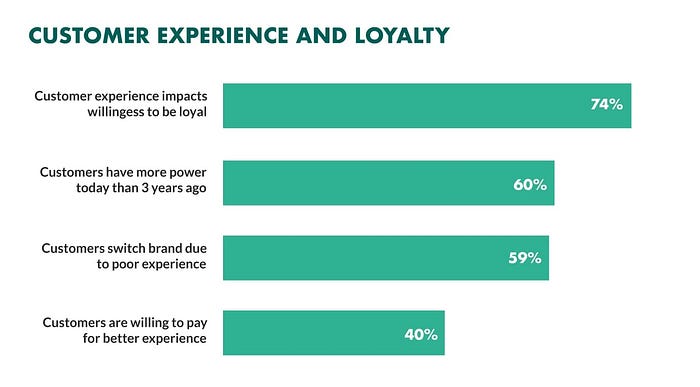
Empowerment of agents: Agents should be empowered with the necessary tools and information to resolve customer issues efficiently. This not only improves the customer experience but also boosts agent satisfaction and engagement.
Follow-up and follow-through: Call centers software should make a habit of following up with customers after interactions to ensure that their issues were resolved to their satisfaction. Additionally, call centers should follow through on any commitments made to customers during interactions.
Predictive Dialer Software: The Future of Contact Centers
Predictive dialer software represents the future of contact centers as it enables organizations to improve the efficiency and effectiveness of their outbound calling efforts. This technology automates the dialing process and connects agents with customers more quickly and efficiently, reducing wait times and improving the customer experience.
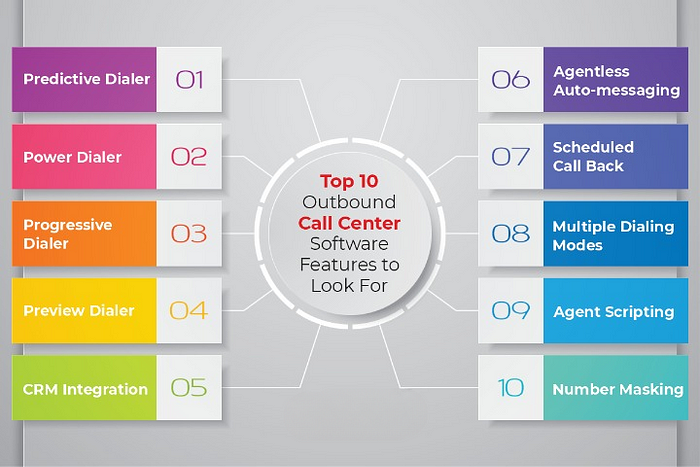
Some of the key trends driving the future of predictive dialer software include:
1. Artificial Intelligence (AI) and Machine Learning (ML): AI and ML are becoming increasingly integrated into predictive dialer software, enabling the software to make more accurate predictions, adapt to changing conditions in real-time, and improve call connection rates.
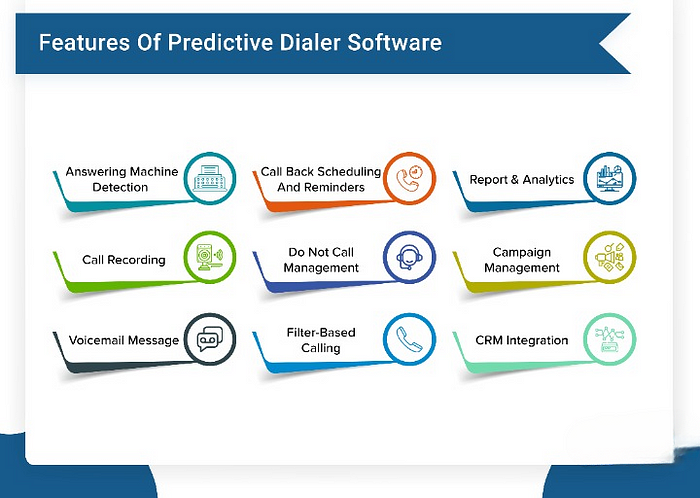
2. Integration with other systems: Predictive dialer software is becoming more integrated with other systems, such as CRM, telephony, and analytics tools. This allows organizations to access a complete view of customer interactions and make data-driven decisions about their call center operations.
3. Cloud-based delivery: Cloud-based delivery models are becoming increasingly popular for predictive dialer software, allowing organizations to access the software from anywhere with an internet connection and reducing the need for expensive on-premise hardware and software.
In conclusion, predictive dialer software is transforming the future of contact centers by improving efficiency, reducing wait times, and providing a better customer experience. With continued innovation and integration with other technologies, predictive dialer software will play an increasingly important role in the future of contact center operations.
A Comprehensive Guide to Predictive Dialer Software Setup and Maintenance
Setting up and maintaining predictive dialer software can be a complex process, but with the right planning and preparation, it can be a smooth and seamless experience. Here is a comprehensive guide to setting up and maintaining predictive dialer software:
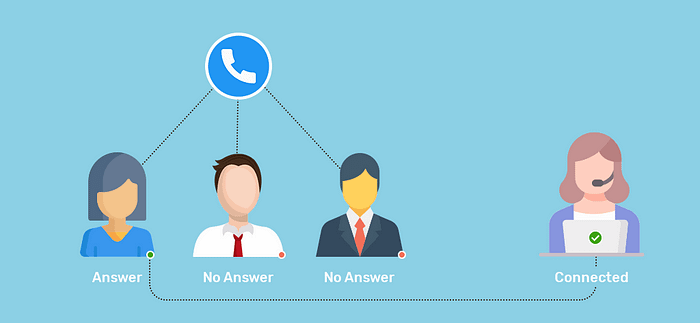
1. Plan and prepare: Before setting up predictive dialer software, it is important to determine your call center’s goals, objectives, and requirements. This includes assessing your current call volume, average call length, and the number of agents you have.

2. Choose the right software: Research and compare different predictive dialer software options to find one that meets your needs and budget. Look for a solution with a good track record of reliability, performance, and customer support.
3.Implement the software: Once you have chosen the right software, work with your vendor to implement the solution. This may involve training agents on how to use the software, configuring call center workflows, and integrating the dialer with other tools and systems.
4.Monitor and adjust: After implementation, it is important to monitor the performance of your predictive dialer software and make adjustments as needed. This may include tuning algorithms to improve call connection rates, adjusting staffing levels to meet demand, and addressing any issues that arise.
5.Regular maintenance: Regular maintenance is key to ensuring that your predictive dialer software continues to perform optimally.
How can a call centre improve the customer experience?
Maintaining customer satisfaction is a top priority for any business because it can make or break a company. This is especially true for customer service centres. In terms of overall customer satisfaction, how does your centre fare?
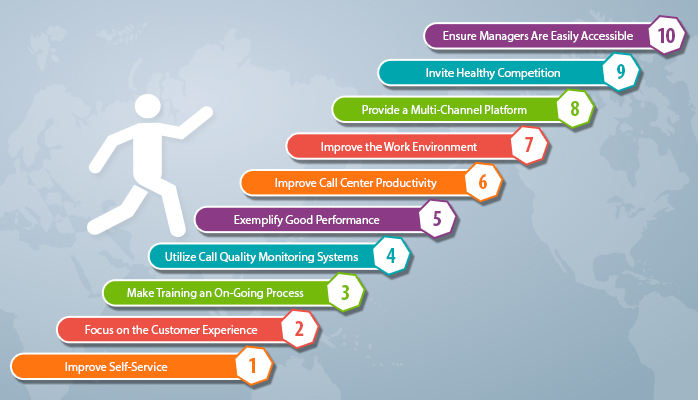
Because a positive customer experience can boost customer satisfaction and overall brand success, every call to your contact centre provides you with an opportunity to meet and exceed customer expectations.
- Recognize your customer
- Train your agents thoroughly.
- Understand all phases of the customer journey
- Cut back on hold times
- Request customer feedback.
- Make use of live chat
- Simplify the customer user experience
Here are 5 call center solutions to improve customer satisfaction:
Interactive Voice Response (IVR) systems: IVR systems allow customers to quickly and easily navigate through a menu to reach the right department or agent, reducing wait times and improving the overall customer experience.
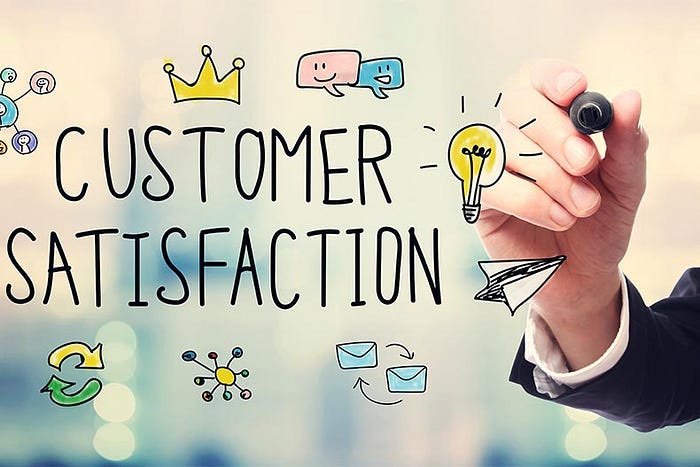
Customer Relationship Management (CRM) software: CRM software allows call center agents to have access to customer information, history, and preferences, helping them resolve issues more quickly and effectively.
Workforce Management (WFM) software: WFM software helps contact centers to optimize staffing levels by predicting call volume and determining the number of agents needed to handle the volume.
Chatbots and AI-powered virtual assistants: Chatbots and virtual assistants can help handle simple customer inquiries and provide fast and efficient support, freeing up call center agents to focus on more complex issues.
Call analytics and reporting tools: Call analytics and reporting tools provide valuable insights into call volume, wait times, customer satisfaction, and agent performance, allowing contact centers to make data-driven decisions to improve operations and customer satisfaction.
By implementing these call center solutions, contact centers can improve the customer experience and increase customer satisfaction.
What is Call Center Performance Optimization with Automation?
What Is Call Center Automation? Call center automation uses software or technology to perform routine, time-consuming tasks and processes. It eliminates or significantly reduces the need for human interventio
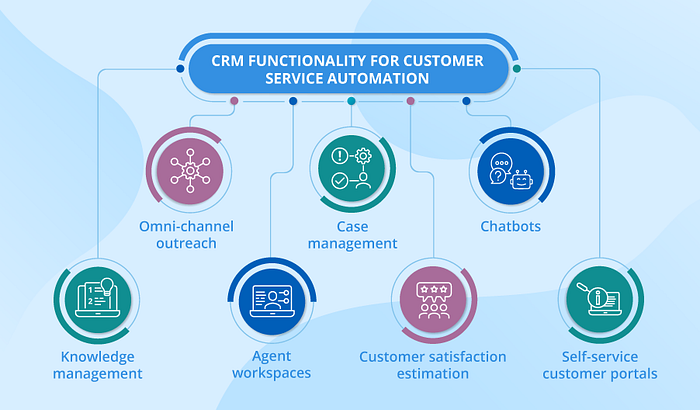
Optimizing Call Center Performance with Automation
Call center automation can help optimize performance by streamlining processes, reducing wait times, and improving overall efficiency. Some of the ways call center automation can improve performance include:
1. IVR (Interactive Voice Response) system: An IVR system allows customers to self-serve by providing automated responses to common inquiries. This reduces the number of calls that need to be handled by agents, freeing them up to focus on more complex issues.

2. Call Routing: Automated call routing ensures that calls are directed to the right agent, reducing wait times and improving first-call resolution.
3. Workflow Automation: Automated workflows can help agents handle calls more efficiently by providing them with step-by-step instructions and access to relevant information.
4. Reporting and Analytics: Automated reporting and analytics tools can provide real-time insights into call center performance, enabling managers to make data-driven decisions about staffing, training, and other operational improvements.
What is Call Center Solutions
Call center solutions refer to technologies, tools, and software that are designed to improve the operations and customer experience of call centers. These solutions are used to manage the inbound and outbound calls that are the core of a call center’s business. Some common call center solutions include:
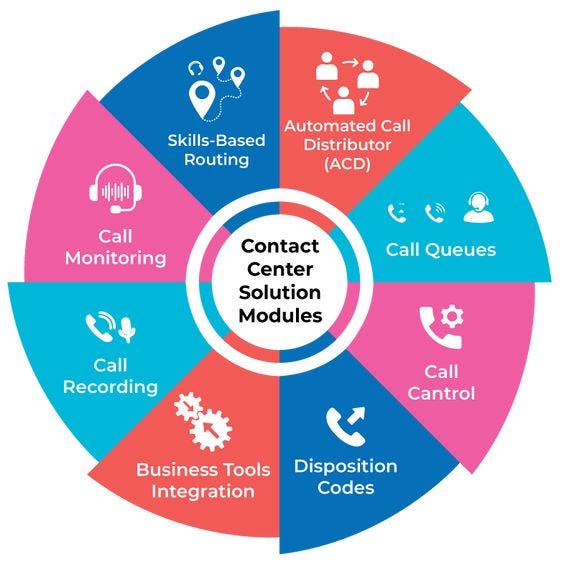
1. Interactive Voice Response (IVR) systems
2. Customer Relationship Management (CRM) software
3. Workforce Management (WFM) software
4. Call Recording and Quality Monitoring systems
5. Cloud-based call center software
6. Automated call distribution (ACD) systems
7. Call analytics and reporting tools
These solutions are aimed at improving the efficiency and effectiveness of call center operations, enhancing the customer experience, and providing valuable insights for continuous improvement.
5 Call Center Solutions to Improve Customer Service
- Interactive Voice Response (IVR): This technology allows customers to navigate a menu of options via touch-tone or voice commands to reach the appropriate department or individual.
- Customer Relationship Management (CRM) software: This software integrates customer data and interactions from multiple channels to give call center agents a complete view of each customer’s history and preferences.
- Workforce Management (WFM) software: This software helps call centers optimize staffing levels, ensuring that enough agents are available to handle call volume during peak periods.
- Call Recording and Quality Monitoring: Recording calls helps to identify areas for improvement in agent performance, and monitoring calls can provide actionable feedback to agents to improve customer interactions.
5 Cloud-based call center software is a type of customer service and support technology that is hosted on remote servers and accessed through the internet.
This type of software provides call center agents with tools to manage incoming and outgoing calls, track customer interactions, and access customer information in real-time.
Some common features of cloud-based call center software include call routing, IVR, automatic call distribution, call recording, and real-time reporting.
What is a predictive dialer and how does it work in the sector?
A predictive dialer is a type of software used in call centers to automatically dial a list of phone numbers and route the calls to available agents. The goal of a predictive dialer is to maximize the number of connected calls and minimize the amount of time agents spend waiting for a call.
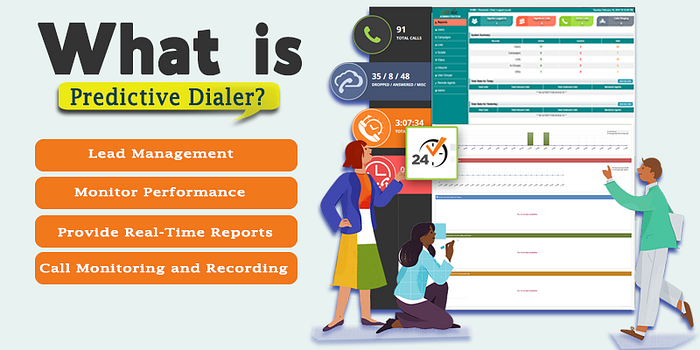
Here’s how it works:
- The predictive dialer software uploads a list of phone numbers and determines the best time to call based on the call center’s current capacity and the availability of agents.
- The dialer starts calling the numbers on the list, and as soon as an answer is detected, it routes the call to an available agent.
- The dialer uses algorithms to predict when a call is likely to result in a connection, based on factors such as call history, time of day, and calling patterns.
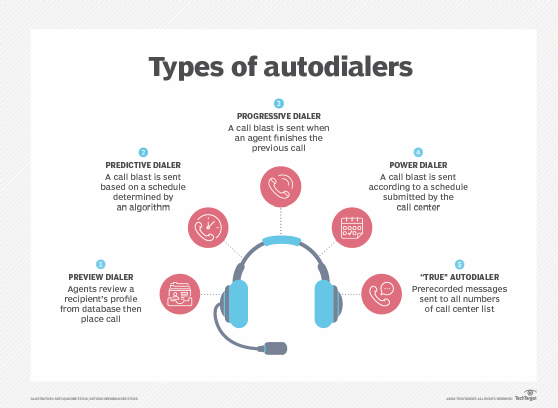
- If a call is not answered or goes to voicemail, the dialer moves on to the next number on the list.
- The predictive dialer also tracks and adjusts the dialing pace to ensure that the call center has enough agents available to handle the volume of calls.
The use of a predictive dialer can significantly improve the efficiency of call centers,
As it reduces the amount of time agents spend waiting for calls and increases the number of connected calls. This results in a better overall customer experience, as call wait times are reduced, and agents are able to handle more calls in a shorter amount of time.
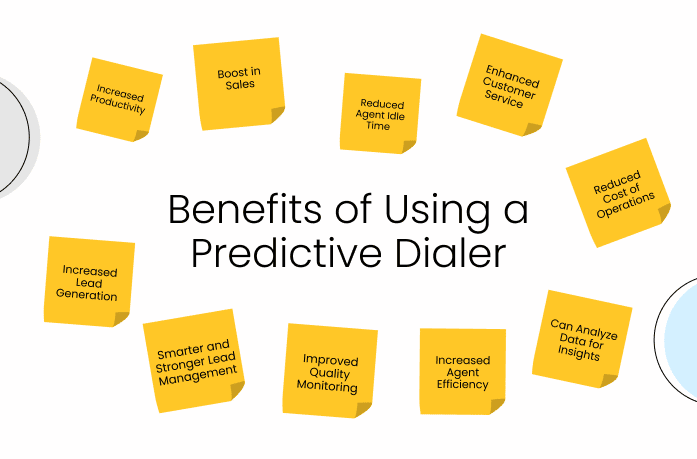
Here are 4 ways predictive analytics can boost the success of a contact center:
- Improved call routing: Predictive analytics can analyze call patterns and customer behavior to determine the best way to route calls, reducing wait times and improving the overall customer experience.
- Increased agent efficiency: Predictive analytics can help contact centers optimize their staffing levels by predicting call volume and determining the number of agents needed to handle the volume.
- Better customer insights: Predictive analytics can provide valuable insights into customer behavior, preferences, and purchasing patterns, which can be used to improve customer service and satisfaction.
- By using predictive analytics, contact centers solutions can improve their operations and provide better service to customers. Predictive analytics helps to make informed decisions by providing data-driven insights that can help optimize call routing, staffing, and customer engagement strategies.
10 ways a call centre can improve employee communication
Call centre customer relationship management (CRM) is a call centre technology solution that gives employees instant access to account information and history, allowing them to provide customers with up-to-date and relevant information during support.

1. Regular team meetings: Regular team meetings can provide a platform for management to communicate important updates and for employees to voice their concerns.
2. Employee feedback: Encouraging and acting on employee feedback can help build trust and improve communication within the team.
3. Clear and concise job descriptions: Defining clear job roles and responsibilities can help employees understand their expectations and responsibilities.
4. Employee training: Regular training sessions can help employees learn new skills and improve their performance.
5. Performance tracking and reporting: Regular performance tracking and reporting can provide employees with valuable feedback on their performance and help identify areas for improvement.
6. Open-door policy: Encouraging an open-door policy can foster an environment of transparency and collaboration.
7. Employee recognition programs: Implementing employee recognition programs can help boost employee morale and motivation.
8. Company newsletters: Regular company newsletters can help keep employees informed about company news and developments.
9. Regular one-on-one meetings: Regular one-on-one meetings between employees and their managers can provide an opportunity for open communication and address any concerns.
10. Communication channels: Providing multiple communication channels such as email, instant messaging, and video conferencing can help employees stay connected and collaborate more effectively.
How Predictive Dialer Software is Transforming the Call Center Industry
Predictive dialer software is transforming the call center industry by automating the dialing process and improving agent utilization. This type of software uses algorithms to predict when an agent will become available and automatically dials the next number on their behalf, significantly reducing the amount of time they spend waiting between calls.

Some of the key benefits of predictive dialer software include:
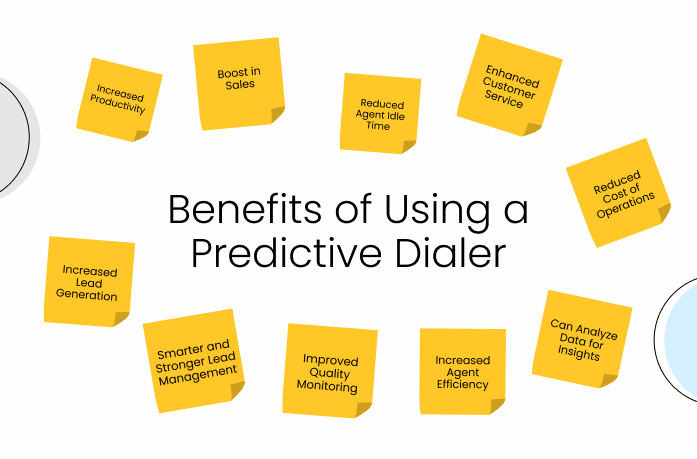
1. Increased Productivity: Predictive dialers reduce the amount of time agents spend waiting between calls, allowing them to handle more calls per hour and improving overall productivity.
2. Improved Call Connection Rates: Predictive dialers use algorithms to optimize the dialing process, reducing the number of unanswered calls and improving connection rates.
3. Better Customer Experience: With predictive dialers, calls are connected faster, reducing wait times and improving the customer experience.
4. Real-time Monitoring: Predictive dialer software provides real-time monitoring and reporting, enabling managers to track performance and make data-driven decisions about staffing and operations.
In conclusion, predictive dialer software is transforming the call center industry by improving agent productivity, increasing call connection rates, and providing real-time insights into performance.


























